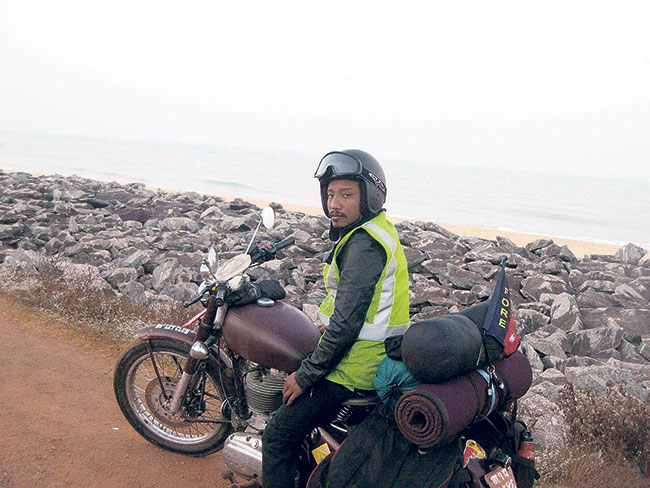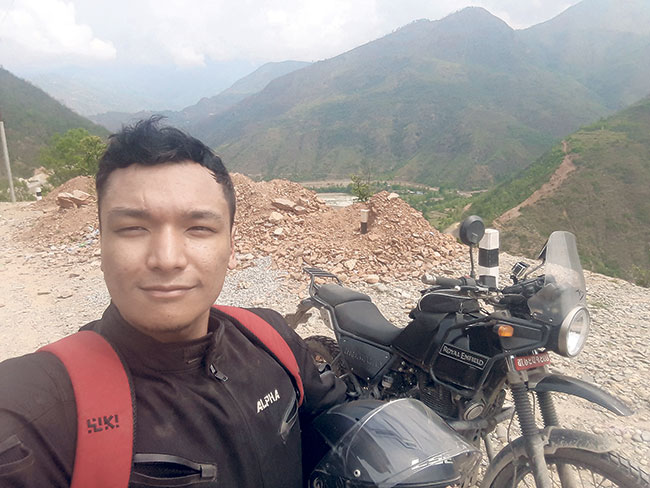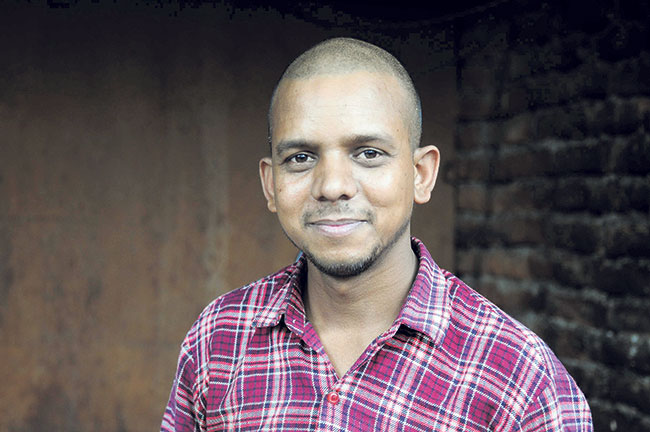In case, walking is too slow for you and traveling in vehicles too confining, we now know which method of travel to opt for. The appeal of motorbike trips is only growing stronger among our masses. So for those of you interested to hop on a bike, we have collected a few advices from experienced riders to help you get started.
Manish Maharjan
I started going on long motorbike trips about five years ago. As part of the Royal Enfield club, we have been to various places of Nepal as well as traveled extensively through India as well. When you are traveling on a bike, the feeling and the experience are different. Some may consider it risky but, in my opinion, you are at some degree of risk even while walking or riding buses, cars and such.
Besides, anybody who travels on bikes will tell you that safety is always our biggest priority. We are aware that even when you are being careful, there is a chance that somebody else’s carelessness might hurt you.

So safety gears are a must. Riding pants come with armors, the jackets too have pads on the arms and shoulders. There are knee- and elbow-pads plus riding boots and gloves. The helmet is obviously a given. All these things are non-negotiable. You shouldn’t be going on long motorbike trips without them. They may be a little costly for some, a jacket for example here in our valley goes for Rs. 10,000 to Rs 15,000 but if you can get them from abroad, they will cost you a lot less.
The second most important thing is to check the condition of your bike before heading off. This will end up saving you a whole lot of hassle on the road. Make sure your bike is in the state to make those long trips and don’t compromise on its condition. It’s also best to use bikes that are especially designed for these kinds of trips. This will help you be more comfortable in the journey as well as tackle the road conditions.
Need for Speed, Satisfied

There are various accessories like saddlebags for your luggage to help make your motorbike trips more convenient. It might be a good idea to check out the options. Lastly, never forget to take a small first aid kit with you.
Shaquille Swanseii Ghotane
I’m actually still new to this kind of traveling. I had my first long motorbike road trip just last year. I got an opportunity to go to Bardiya and I just went for it. Initially, I just wanted to travel far away from the valley but the trip turned out to be a lot more memorable than expected. While riding through the green landscape of Bardiya, I remember getting goose bumps.
What I did learn from the experience though was to expect changes in your plan. Things never pan out exactly like you want them to. So yes, it is always smart to plan your routes, think ahead of the time factor and map out your riding routine according to your capacity. But it’s also best to be mentally prepared for unexpected problems or changes in plans.

Personally, when I don’t have petrol or time constraints, I like to try new routes than sticking to the mapped direction. There is a different kind of fun in stumbling through less traveled roads as well. But you also want to gather as much information about the area before heading out on the road. It’s crucial to know spots where there are petrol stations or repair services. If you talk to people who have traveled to the places before, you should be able to get an idea of those things.
I plan to ride up to Lo Manthang around Dashain and I have already started contacting some travelers who have motor biked their way up there. I’m also collecting some necessary tools for repair too. The important thing is to make yourself capable of getting out of tight spots if you happen to encounter them. With a little tact, I think, it’s very easy to avoid these situations. I would also recommend carrying some snacks with you. Every now and then, it comes in handy.
Sonu Ali

I first started working as a mechanic at Pramod’s workshop, and later on I started going on their guided tours as well. Whenever the company organizes these motorbike tours, there is always at least one mechanic in the group. This is because in the weeks long and sometimes a month long trip, there is bound to be some mechanical problems on the road.
When we travel to Muktinath for example, there are issues with break paddles, looking glass and such. There were many instances when they just broke and we had to fix them on the road. Even when the route isn’t as challenging as that of Muktinath, but actually a straight, simple stretch, there are chances of a puncture. It’s normal to have these problems. When you are on a motorbike trip, you are bound to come across these issues.
So I would suggest those interested to go on motorbike to learn the basics. It will be helpful for you if you know how to fix accelerator cables or know the location of the fuse or how to change the clutches on the bike. These are things that will eventually be very useful.
On our guided trips, whenever somebody’s motorbike fails, we give them a lift to the nearest teashop or the hotel and ask them to rest while we fix the bike, but this clearly isn’t a common scenario. Most riders won’t always have a mechanic around.
It might also be useful to take your own toolbox and spare parts. When I go on our trips, I carry all the tools, from petrol jerry cans, to pipes and foot pumps. Each rider can decide what he/she needs and make his/her own travel tool kit.





































